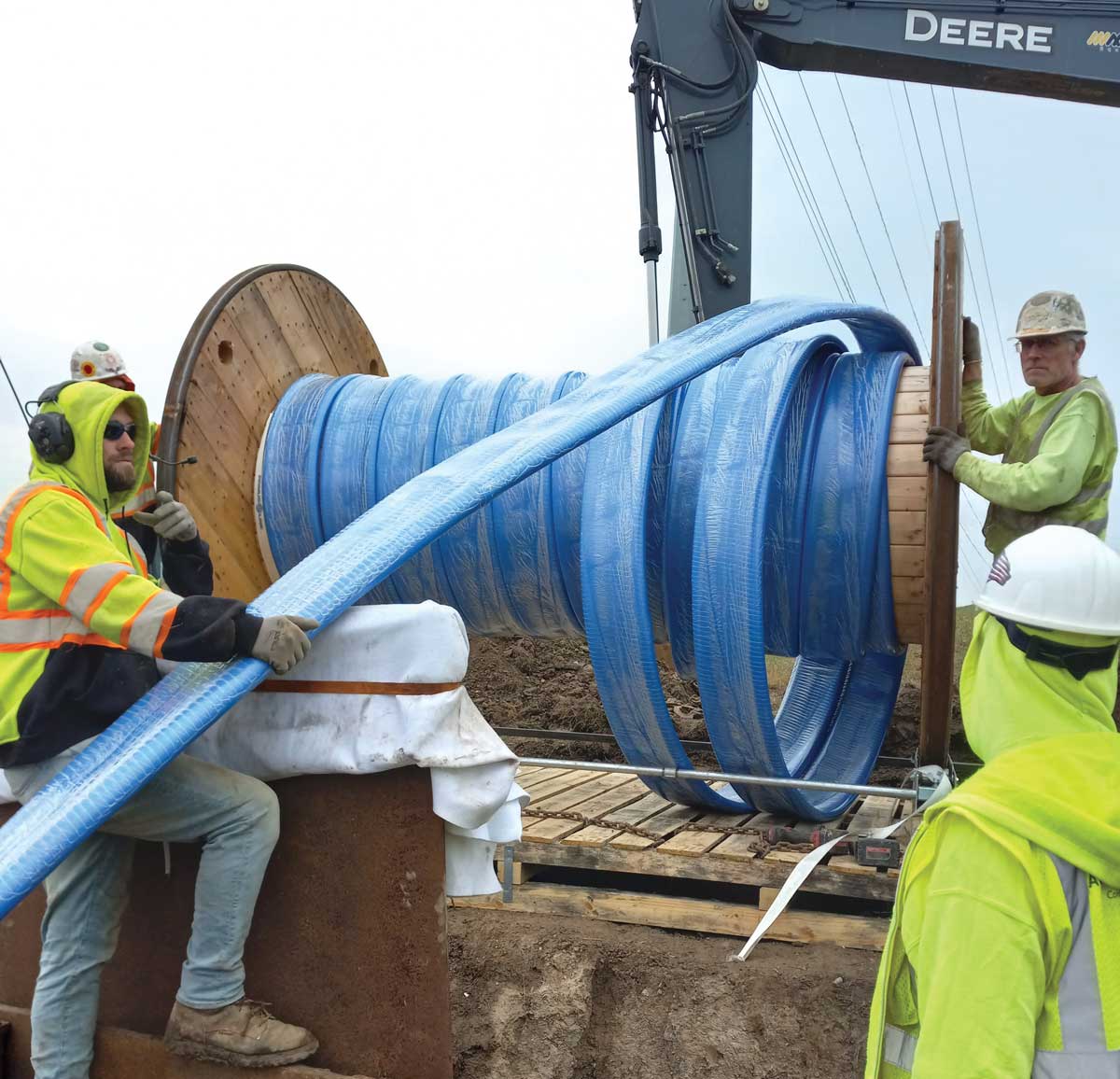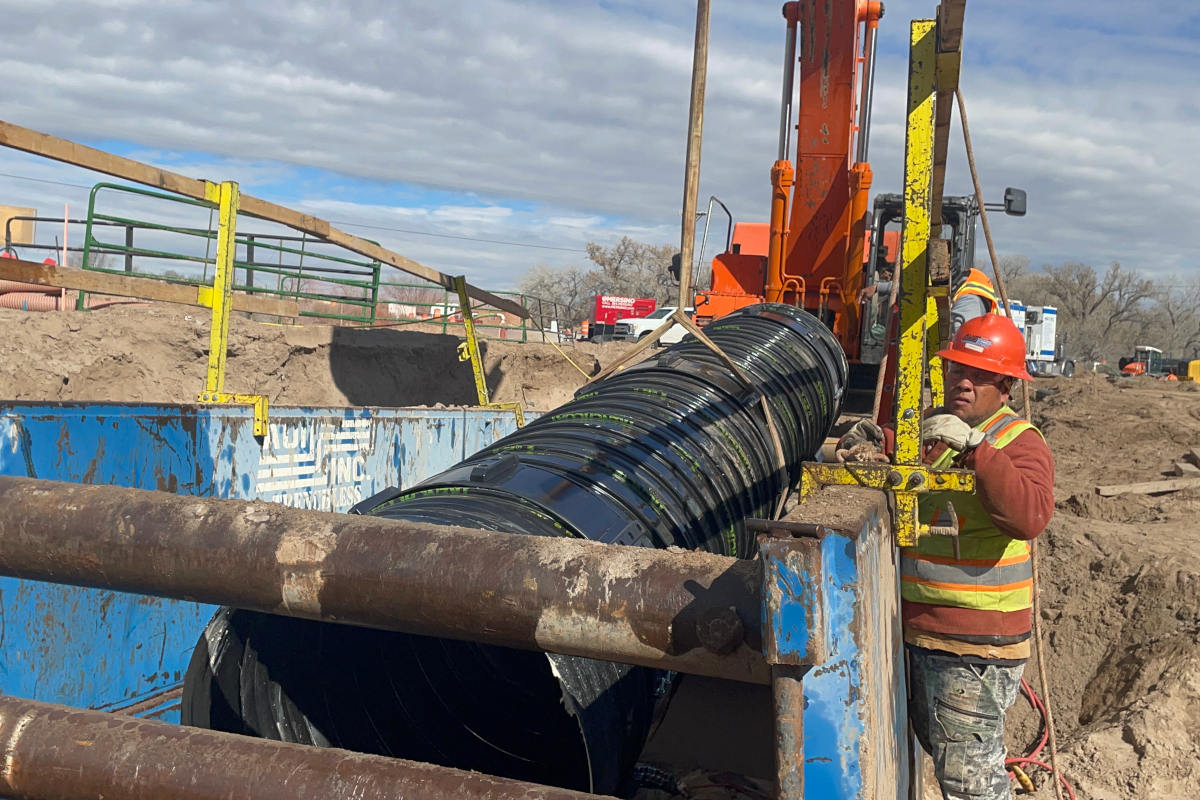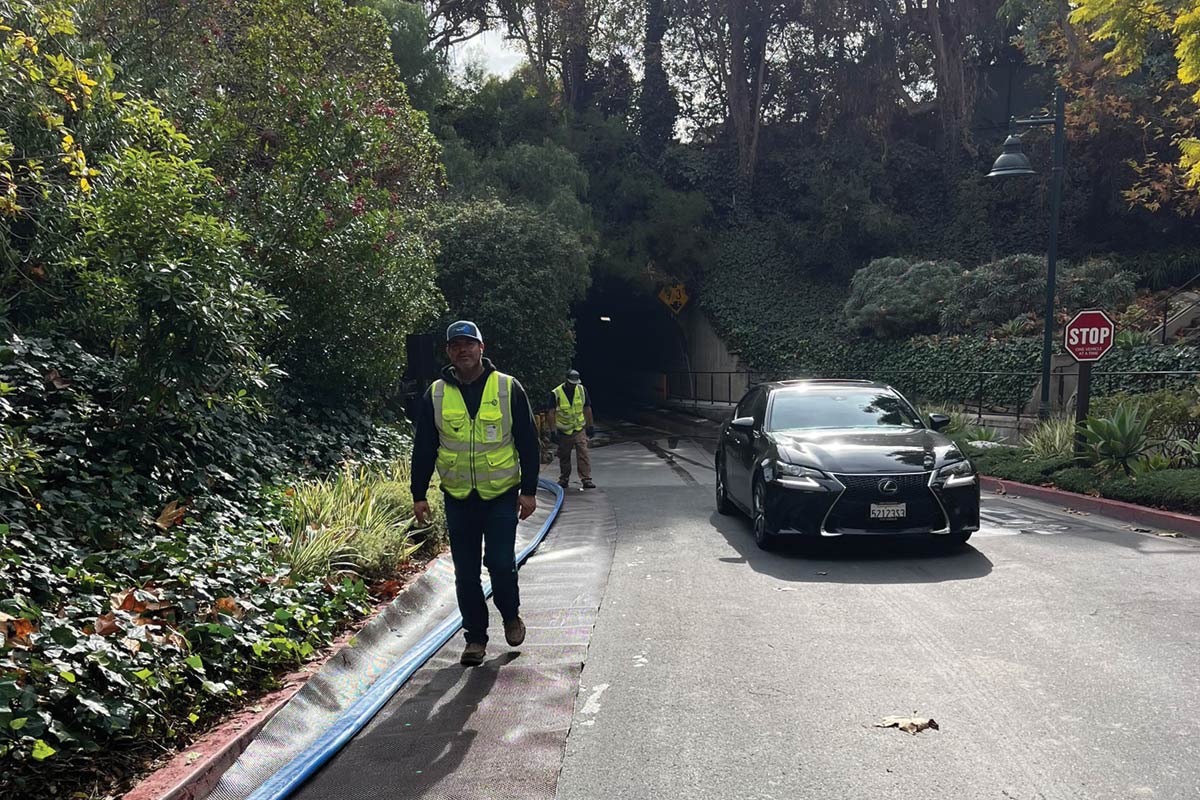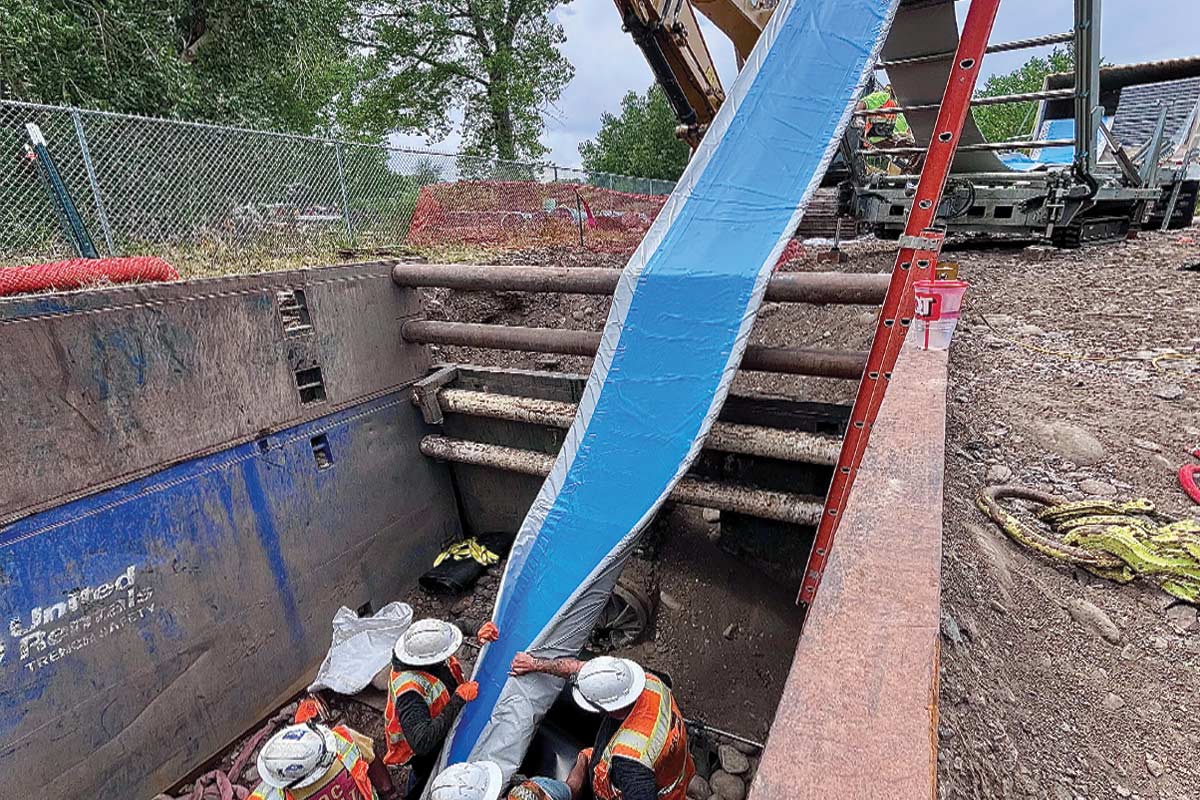
NASSCO Report – Benefits of Using FFRP in Pressure Pipe Rehab Projects
Flexible fabric reinforced pipe (FFRP) systems have been used for pressure pipeline rehabilitation for more than two decades. The system consists of a flexible aramid-reinforced pipe and specially developed end fittings. These systems have been designed for the rehabilitation of water, sewer, oil, and gas pressure pipelines.
FFRP is a factory-manufactured round pipe that is modified into a “C” or “U” shape and coiled onto reels. The reels can be anywhere from 5 to 38 ft wide, and accommodate from a few hundred to 18,000 ft, depending on the pipe diameter and project needs.
The key advantages of the FFRP system include allowing for long installation lengths of over 8,000 ft while traversing multiple bends, and its high-pressure capabilities. Besides the rehabilitation of damaged pipelines, it can also be used to increase the pressure within existing systems, protect them from internal corrosion and build bypass systems or stand-alone solutions.
RELATED: NASSCO Report – Pressure Pipe Rehab Using Sliplining with FRP
The installation of FFRP follows the modified sliplining method of pipe rehabilitation. This is where a continuous supply of modified pipe is winched through the host pipe and reverted to its manufactured “round” shape by air pressure. Once in place, mechanical or welded end connectors are installed to terminate and seal the liner within the connector, thus creating a new pipe within a pipe.

Case Study: Rehabilitation of a 16-in. Water Main under a Dual Track RR Crossing
Illinois American Water Company, a subsidiary of American Water, provides water to the City of Peoria, Illinois and several surrounding municipalities. Installed in 1971, this transmission main had been installed along the street while it was originally an at-grade crossing of the dual track railroad. In the 1980s, the street was elevated to cross the tracks, and the construction of the bridge and associated site work created areas where the water main was over 30 ft deep.
Several years ago, a leak developed on the water main, and upon inspection, it was determined that the line needed replacement. Site access, topography, permits and availability of right-of-way all contributed to the Utility’s decision to pursue rehabilitation of the existing pipeline instead of a direct replacement.
Because there were multiple vertical bends along this segment of water main, conventional CIPP would have required at least one intermediate access pit which was not possible due to the depth of the water main and the proximity to both the bridge structure and the active railroad track. FFRP was chosen as the most appropriate solution to accomplish the rehabilitation successfully with one continuous length of liner.
RELATED: Insituform RPP Used to Rehab Daytona Beach Pressure Pipe
As part of the rehabilitation preparation work, a line valve was installed to isolate the transmission main from the rest of the water system. After the valve was in place, another leak developed on the segment that was to be rehabilitated, which further illustrated the need for a rehabilitation solution.
Once the line had been sufficiently cleaned and prepared, insertion began mid-morning and was completed before noon. Work began on the installation of the medium pressure connectors around 2:30 p.m., and the last connector was finished around 6:30 p.m. Several days later, the line was pressure tested, bacteria tested and returned to service.
With FFRP’s ability to traverse multiple bends and long distances, Illinois American Water was able to shorten the project timeline and keep the access pits off the railroad right-of-way, making FFRP the ideal choice for rehabilitation of this pipeline.
To learn more about FFRP and other trenchless rehab solutions for force mains, visit nassco.org.




